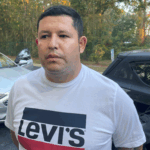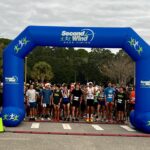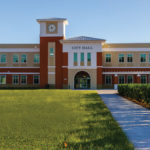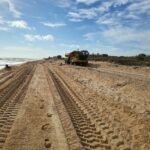Known for his stunning images that capture the essence of our local environment, Mike is also deeply involved in a unique and impactful career. Let’s dive into his world and uncover how he blends his professional life with his passion for photography.
Mike is not only a talented wildlife photographer but also works closely with individuals with autism, focusing on managing their anxiety. His work involves helping people from group home settings and foster care by teaching them grounding techniques and stress management strategies. “I get to practice these techniques in my photography and often integrate them in a way that’s not always apparent,” Mike explains.
Mike’s journey into wildlife and landscape photography was sparked by a pressing issue in Matanzas Inlet. “The sand emergency there was a growing problem that wasn’t widely recognized yet,” Mike recalls. “I wanted to document it because I didn’t know where to bring the right evidence. My landscape photography became a form of echo journalism.” His wildlife photography serves to raise awareness about habitat loss and its impacts on local wildlife.
His primary goal with his wildlife photography is to shed light on habitat loss. “I’ve seen significant changes in local wildlife habitats due to overdevelopment,” he notes. For instance, the wild hogs at Wadsworth Park are a stark example of how urban expansion encroaches on natural spaces. “Places that used to be wooded are now developed, forcing wildlife into smaller, more exposed areas.”
Photographing wildlife in Flagler County presents its own set of challenges, primarily due to the region’s abundant bugs. “In conservation areas and preserves, where pesticides are not used to protect pollinators, the bugs and snakes can be overwhelming,” Mike says. “It’s a challenge to stay safe while trying to capture those perfect shots.”
Mike highlights how development impacts local wildlife, driving animals from their natural habitats into less secure areas like local parks. “I track local construction and clearing events to understand where wildlife might be displaced. It’s often in these transitional spaces, like Herschel King Park, that I find the wildlife I photograph,” he explains.
When it comes to ethical considerations, Mike emphasizes the importance of minimizing human impact. “We used to focus on ‘Leave No Trace,’ but now it’s crucial to clean up as we go. Avoiding feeding wildlife and letting them remain wild is essential,” he advises.
He believes in using his photography to educate the public about wildlife and environmental conservation. “Education is key. If people care about the animals, they’ll care about their habitats,” he says. His approach involves making conservation engaging and accessible, encouraging people to appreciate the environment through the lens of wildlife.
Mike’s commitment to animal welfare is evident in his work. “If I encounter an animal in distress, like one with a swallowed hook, I prioritize its welfare over getting a perfect shot. I immediately contact Fish and Wildlife for assistance,” he shares.
For those spending time outdoors, he suggests being prepared for emergencies. “Always have GPS on and know how to contact local authorities. It’s important for safety and quick response in case of emergencies,” he advises.
Mike hopes his work will help residents understand the delicate balance of our local environment. “As development continues, I want people to appreciate and protect our dunes and wildlife,” he says. His goal is to foster an appreciation for local wildlife and encourage responsible interaction with nature.
For those interested in photographing wildlife, Mike offers practical advice: “Research the animal and maintain a safe distance. Observing animals in their natural behavior without interfering is crucial. I prefer to stay hidden and let wildlife act naturally.”
Mike’s dedication to both wildlife conservation and supporting individuals with autism is a testament to his passion and commitment. His work not only captures the beauty of Flagler County’s wildlife but also serves as a call to action for conservation.
You can check out Mike’s work here:
https://www.facebook.com/EastCoastMikeOMeally
https://www.instagram.com/eastcoastmikeomeally










